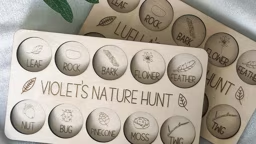
Q: How do I manage noxious weeds and invasive plants while trying to encourage native species to thrive? On our 2½-acre lakefront property, I want to maintain the beautiful woods and encourage native, shade-loving plants while removing buckthorn and killing poison ivy plants. Our property is in Northern Minnesota. – Kimberly Olson
A: Poison Ivy, a native species, was famously recorded in North America by Captain John Smith, who documented the rash-inducing plant in North America when he came across it in Virginia in the early 17th Century. Buckthorn, by contrast, is native to Europe and Asia. Since its introduction to North America as an ornamental shrub, it has “spread aggressively across most of the northeast and upper Midwest,” according to the Minnesota Department of Agriculture’s fact sheet on noxious weeds.
See also 5 Tips for Fruit Tree Success
Both poison ivy and buckthorn are problems in your area, as you’ve discovered, but must be dealt with in different ways. The removal of buckthorn is highly regulated because Minnesota, like many states with the runaway invader, wants to minimize its spread. Uprooting smaller stands (with a diameter between ½ inch and 1 inch) can be done by hand or using a tool like a root extractor. However, take care not to disturb the soil, or new buckthorn plants (or other unwanted species) might grow. (Before any uprooting project, check with Gopher State One Call to be sure it’s safe to dig. This state safety organization in Minnesota is a one-stop-shop for everyone who does any excavating, large and small, to prevent ruptured underground pipes, wires etc.)
Burning buckthorn works, but you probably don’t want to do that on the acres near your home, in part because you may end up burning plants that you want to keep. Otherwise, you can try herbicides like glyphosate (one brand is Roundup), which kills all vegetation, and triclopyr, which kills broadleaf plants but not grasses, according to the Minnesota agriculture department. Important note: Before purchasing and using any herbicide, read the warnings about toxicity and possible health risks. Because removing buckthorn is such an ordeal and you risk inadvertently spreading the plant in the process, you may want to contact a landscape professional to do the job.
Poison ivy isn’t regulated the same way by the state, and, in fact, because it’s native Minnesota has no interest in obliterating it. Property owners are expected to control it along paths or other areas where the public might pass, and your neighbor has the right to ask you to remove poison ivy on any common property boarders. There’s a reason for that. Anyone who’s suffered from a brush with poison ivy understands why one of Batman’s villainous enemies was named for the toxic plant.
Urushiol is the oily resin in poison ivy’s roots, leaves and stems that cause the well-known rash, blistering or swelling on human skin. It’s urushiol’s effect on people that is the major challenge to its eradication. Although less harmful plants have similar leaf patterns, “leaves of three, let it be” is still a good way to identify poison ivy.
Taking it out, of course, means you’ll be touching it on purpose. Always wear plenty of protective clothing – covering your arms, legs and feet, including heavy gloves – when weeding poison ivy, and thoroughly launder those clothes in the hottest setting possible. Don’t ever burn poison ivy because inhaling urushiol-contaminated smoke can cause serious respiratory problems and other health issues, according to the Minnesota Department of Natural Resources.
See also Trees & Shrubs for Your Cabin
Most livestock has adapted to poison ivy, so goats can be brought in to munch it down, but they’ll eat any other plants, too. As with buckthorn, you can use the herbicide triclopyr, but poison ivy is a tough plant to kill that way, according to the University of Minnesota Extension, so it may take more than one spraying. Wait two weeks or more between sprays, and don’t bother once fall color emerges – wait for new leaves to fully expand the next spring. As you can tell, purging your land of poison ivy won’t be much easier than getting rid of buckthorn, so you may want to get a professional in to deal with it, too, especially if there’s quite a bit in your sights.
Now for the fun part: Contemplating what to bring into your woodsy lakefront acres is a lot more agreeable and satisfying than meeting the challenges you face fighting buckthorn and poison ivy. April Matz, retail manager at Minnesota Valley Garden Center in Shakopee, Minn., has two non-invasive suggestions that make nice replacements for buckthorn. The first is shadblow, also known as serviceberry, which grows either as clumpy shrubs or trees. It has white flowers in the spring and brilliant fall color, according to Matz. Its wild berries can be eaten or made into jam, she says. The second is the hardy magnolia, including the varieties Ann and Merrill. Like shadblow, it comes in either shrubs or trees, but with big, thick leaves and fragrant spring and summer flowers.










